 Work goes on to lay a pipe that will channel desalinated water to the Sea of Galilee, June 3, 2021 (Firas Talhami, Water Authority)
Work goes on to lay a pipe that will channel desalinated water to the Sea of Galilee, June 3, 2021 (Firas Talhami, Water Authority)
ISRAEL TO BE 1ST IN WORLD TO PIPE DESALINATED WATER INTO A NATURAL LAKE, THE GALILEE
BY: SUE SURKESSITE: TIMES OF ISRAEL
TRENDING
Activism
AI
Belief
Big Pharma
Conspiracy
Cult
Culture
Economy
Education
Entertainment
Environment
Faith
Global
Government
Health
Hi Tech
Leadership
Politics
Prophecy
Science
Security
Social Climate
Universe
War
Underground channel set to start operating in spring; Sea of Galilee expert says tests indicate more pros than cons, but full effect on ecosystems will only emerge with monitoring.
Early next year, Israel is set to become the first country in the world to channel desalinated water into a natural lake — the Sea of Galilee.
One of the lowest-lying bodies of water on Earth, the Sea of Galilee is Israel’s largest freshwater lake and its emergency water store.
The national water company, Mekorot, plans to complete construction of a 13-kilometer (8-mile) underground pipe by the end of this year, to be followed by weeks of tests before it goes into operation around the end of the first quarter of 2023.
The pipe will connect the lake to infrastructure that in turn links into five desalination plants on the Mediterranean coast.
The water will enter the lake via the Zalmon stream, which drains into the Sea of Galilee near Kibbutz Ginosar on the northwestern shore.
Tests carried out by scientists indicate that the project will not have any significant deleterious effect on ecosystems, and will even help them by keeping water levels stable.
But, conceded Dr. Gideon Gal, head of the Kinneret Limnological Laboratory, which was tasked with carrying out several tests, “all the decisions are accompanied by a certain concern and a wish that we didn’t have to do this.”
Still, he added, “If you balance the advantages and disadvantages, I think that the former outweigh the latter.”
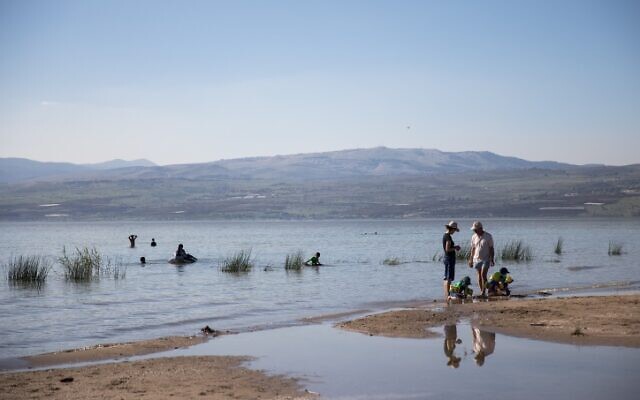
Why do it?
The idea for the NIS 900 million ($264 million) pipe was born toward the end of several disastrous drought years , between 2013 and 2018, when the lake’s level approached an all-time low.
Thanks to plentiful rain over the past two winters, the water level has, temporarily, recovered. In April, it reached as high as 32 centimeters (13 inches) below its maximum capacity, for the first time in 30 years.
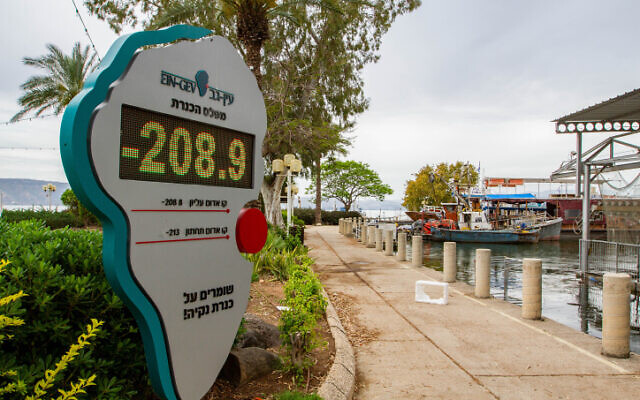
But with climate change, predictions are that rainfall will decline, as demand continues to ramp up with rapid population growth.
Demographics apart, additional supply is needed to implement a 2018 government decision (Hebrew) to connect communities in northern Israel that rely on groundwater and springs to the national water infrastructure.
Within the framework of political agreements, Israel sells about 100 million cubic meters annually to the Palestinians, who are estimated to drill an additional 160 million cubic meters themselves in the West Bank and 200 million cubic meters in Gaza.
In October, Israel agreed to double, to 50 million cubic meters, the water that it supplies annually to parched Jordan.
Then, a month later, Israel and Jordan signed a UAE-brokered deal according to which Israel will supply the kingdom with up to 200 million cubic meters of additional water, in return for Jordanian solar energy.
Israeli officials have not yet decided how they will fulfill their part of this bargain.
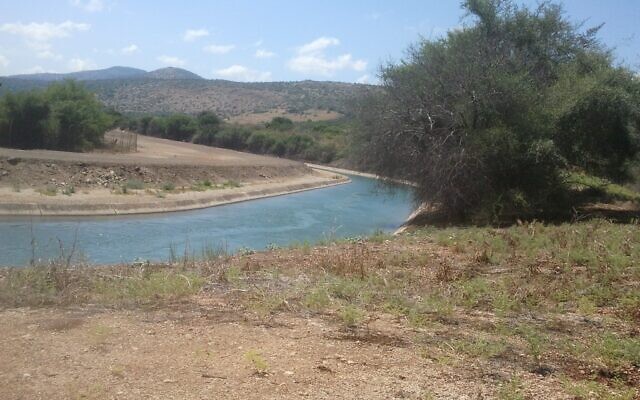
The National Water Carrier, built in the 1960s, directed water from the Sea of Galilee, in northern Israel, southwards to the densely populated center and arid south.
With desalinated water gradually replacing the lake’s freshwater as the main source for drinking and irrigation, a new national water carrier was built to take desalinated water north.
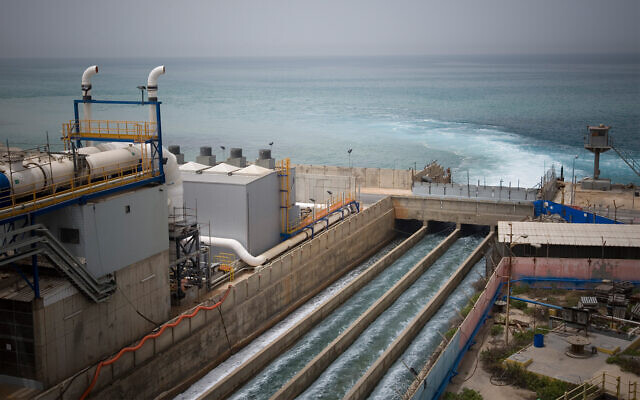
This year, the Water Authority plans to pump just 300 million cubic meters, around 7.5 percent of the lake’s total volume of 4,000 million cubic meters, for the benefit of towns and villages around the lake, with small quantities going to the Golan Heights just to the east, and some entering the original, north-to-south National Water Carrier.
Desalinated water will supply the nation with most of the rest.
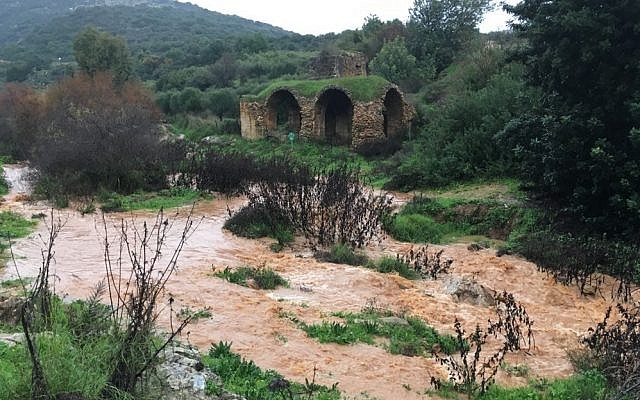
The Sea of Galilee’s changing levels
The surface of the lake is measured in relation to three preset levels, all of them below sea level.
Breaching of the so-called upper red line, at minus 208.80 meters (-685 feet) below sea level, indicates that the lake could flood. In such a rare situation, water experts must consider opening the Degania dam, just to the south of the lake, to allow excess water to flow into southern stretch of the Jordan River. That last happened in the early 1990s.
The lower red line is at -213 meters (-699 feet) below sea level. Pumping beyond this risks damaging the ecosystem.
And below the black line, which stands at minus 215 meters (-705 feet) below sea level, irreversible damage begins and no water can be pumped at all.
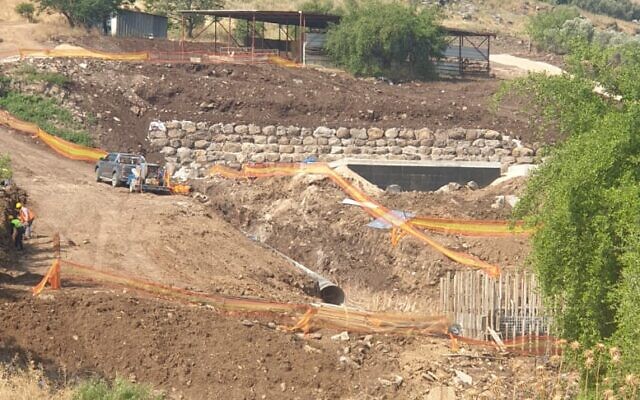
Firas Talhami, who is in charge of the rehabilitation of water sources in northern Israel for the Water Authority (the regulatory body, whose decisions Mekorot carries out), told The Times of Israel that the aim of the new pipe carrying desalinated water will be to keep the lake at the Green Level, around minus 211.40 meters (-694 feet).
A Water Authority spokesperson said that the quantity of desalinated water pumped into the lake annually would depend on the lake’s level in any given year, as well as the quantity of surplus water available from the desalinating plants.
Just a few million cubic meters would be channeled into the lake during the initial years of the project, with the aim of reaching tens of millions of cubic meters annually in the future.
Gal said the instability of the lake’s volume over the years had wreaked havoc on the lake’s aquatic ecosystems.
During the drought years, when so little water was coming in, the water “aged,” negatively affecting the cycle of nutrients, the communities of algae and bacteria, and the stability of the entire ecosystem.
“Imagine leaving water in a basin for a year,” said Gal. “You wouldn’t want to drink it.”
“Over the past 20 years, with big changes in the lake’s level, the Sea of Galilee has been through big changes that we don’t want to see,” he went on. “Maintaining the same level — with variations of around 1.5 meters (five feet) through the year — is super important for a stable ecosystem, which is also important for better water.”
Help or harm?
During the planning stages of the new pipe, the Water Authority asked Gal’s laboratory — part of the Israel Oceanographic and Limnological Research institute — to check three kinds of possible impact on the Sea of Galilee of adding desalinated water.

The experiments he and his staff carried out, some with colleagues from the Technion — Israel Institute of Technology, indicated that the addition of certain quantities of desalinated water would help the lake to recharge its water without any major negative effects either on its biology or the complex way in which it behaves in different conditions and at different depths.
When large quantities of desalinated water were added to containers, in laboratory tests, the composition of algae started to change, Gal said, but this was an extreme situation that did not reflect reality.
Desalinated water was not dissimilar from freshwater that naturally flows into the Sea of Galilee from streams, Gal said, adding that the the lake is relatively salty thanks to the existence of salty springs on the lake’s bed and around it. (Millions of years ago, the Sea of Galilee and the Dead Sea formed a single body of water.) Salt levels also increased as the level of the lake dipped lower, he explained.
While diluting this saltiness, the addition of desalinated water would also bring the temperature of the salty water down.
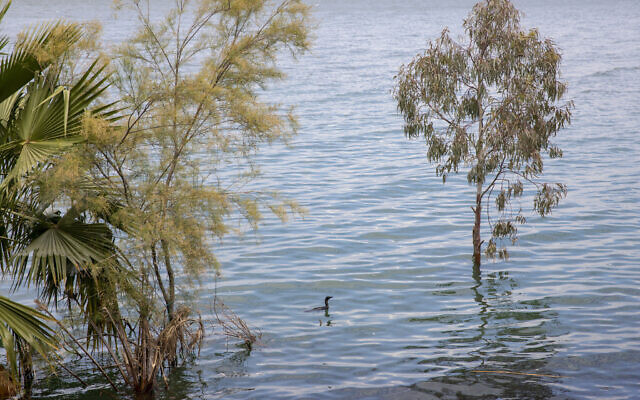
Dr. Menachem Goren, of Tel Aviv University’s zoology department and Steinhardt Museum of Natural History, told The Times of Israel that while he was not party to research for the project or to the data collected, he worried that the meeting of desalinated water with the lake’s salty water could create “dead zones.”
If saltwater fish are exposed to freshwater, the effect of osmosis causes their cells to swell, he noted.
Gal said in response that dead zones could occur if the two kinds of water did not combine quickly enough, something that tests had not indicated would happen.
“In our simulations, we didn’t see dead zones, although the resolution wasn’t at the level of individual meters,” he said. But the differences between desalinated water and freshwater in streams was small, and certainly much smaller than the differences between these two kinds of water and that found in the Sea of Galilee, he added.
Gal’s lab has increased monitoring of the Zalmon stream in order to establish a baseline, before desalinated water comes on line. “We will then look for all sorts of changes, including dead zones,” he said.
Questioned about the disadvantages to adding desalinated water, he said, “Nobody has the answer. We will be the first in the world to put desalinated water into a natural lake. We didn’t find anything [problematic during the tests], but there will certainly be things we haven’t thought about.”
Click 3 Dots Below to View Complete Sidebar


